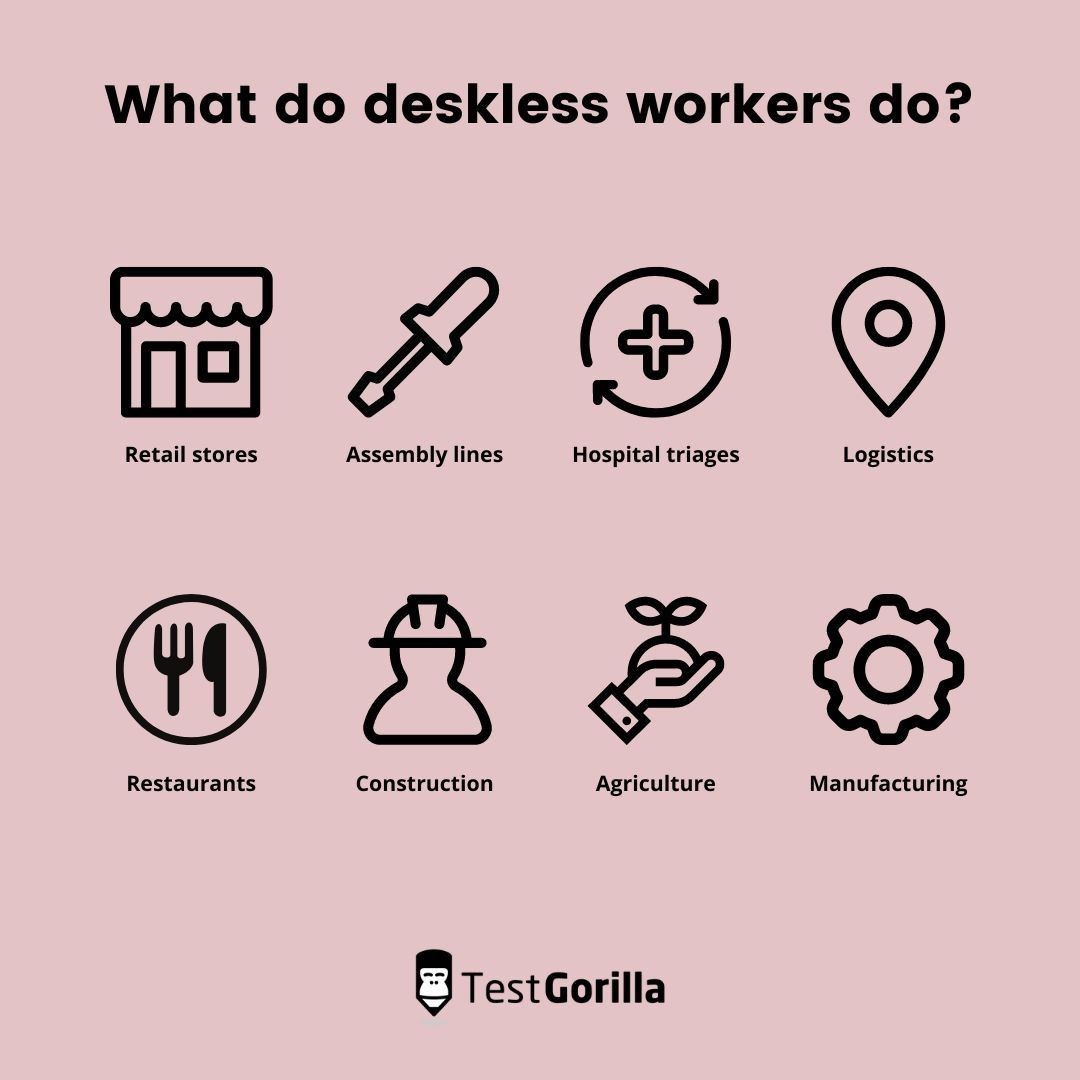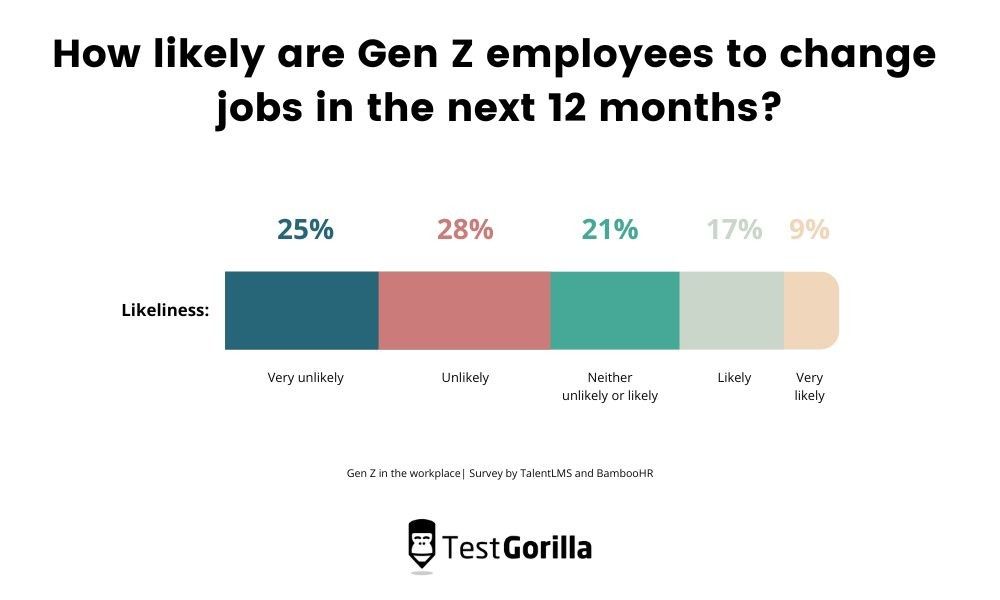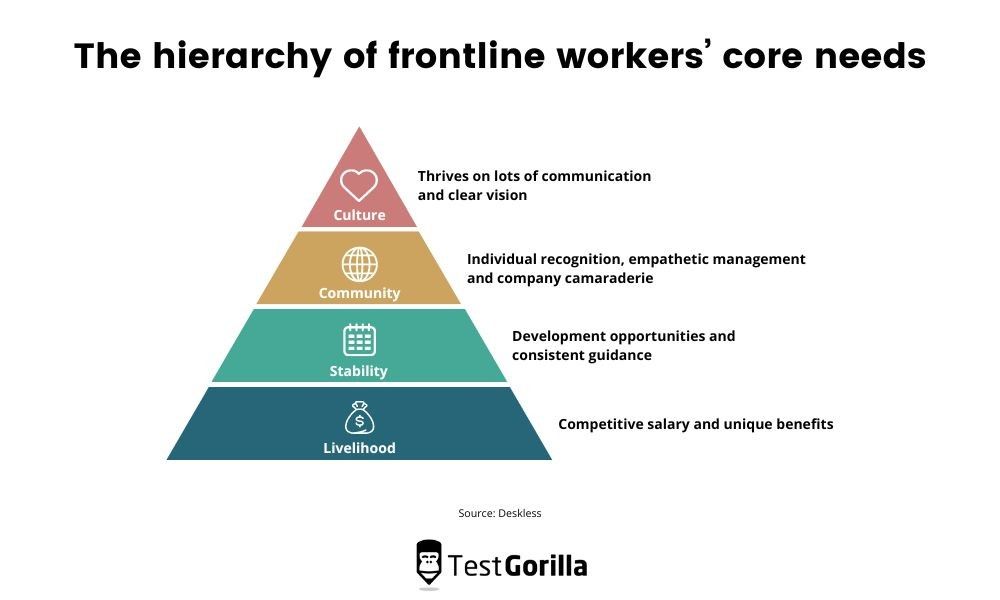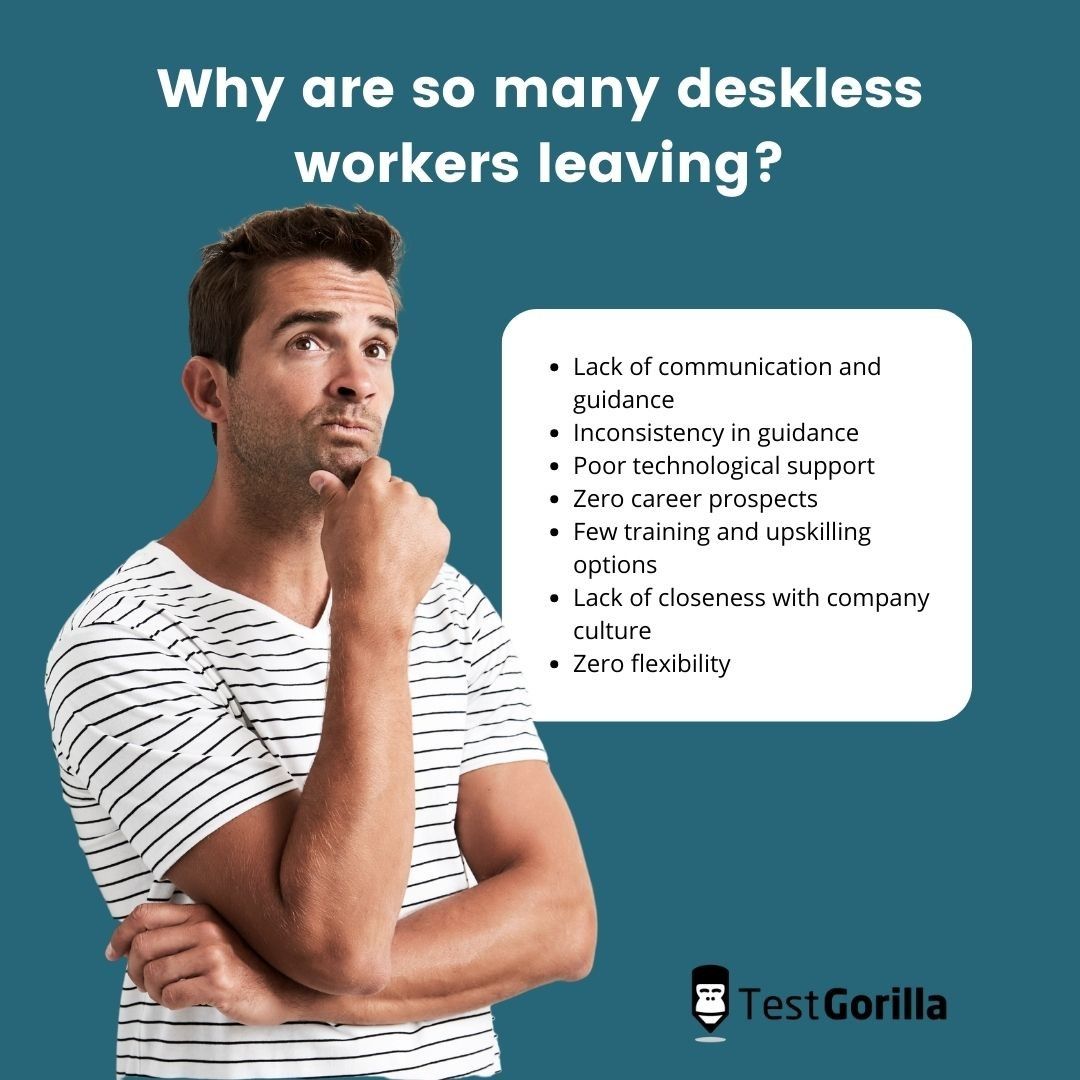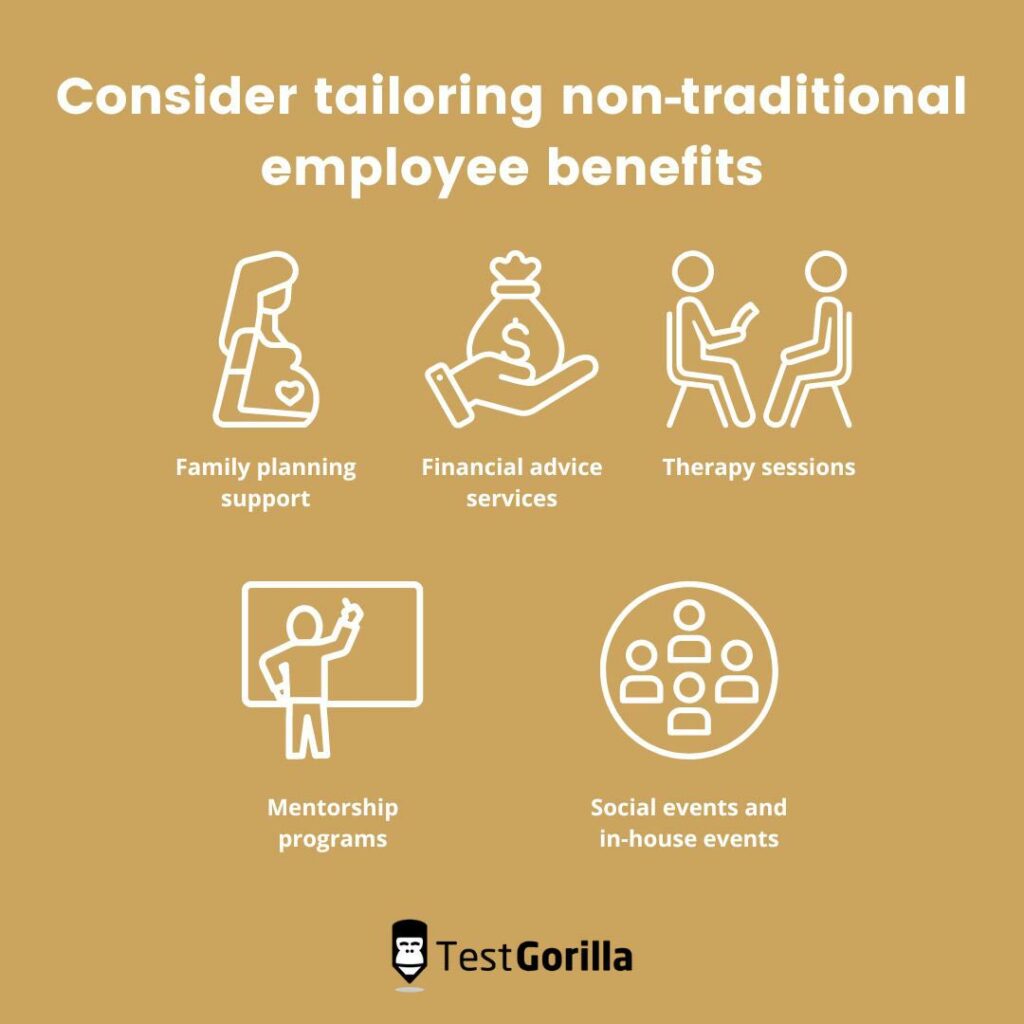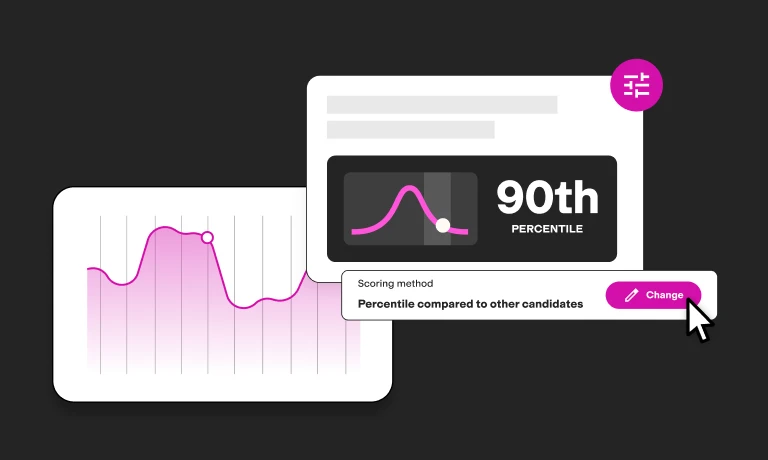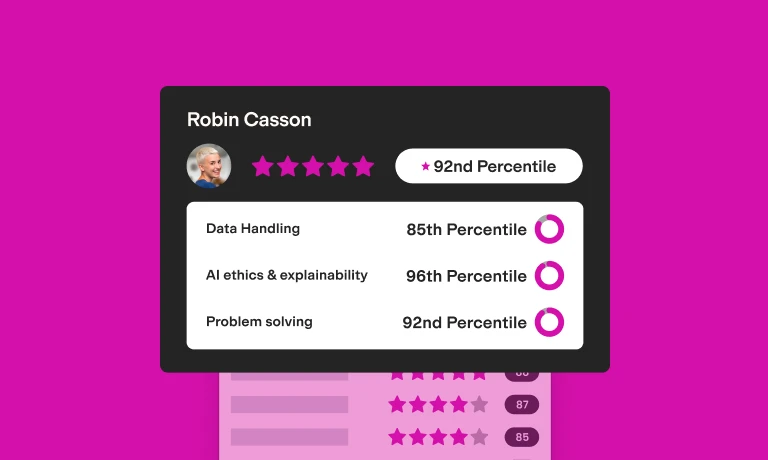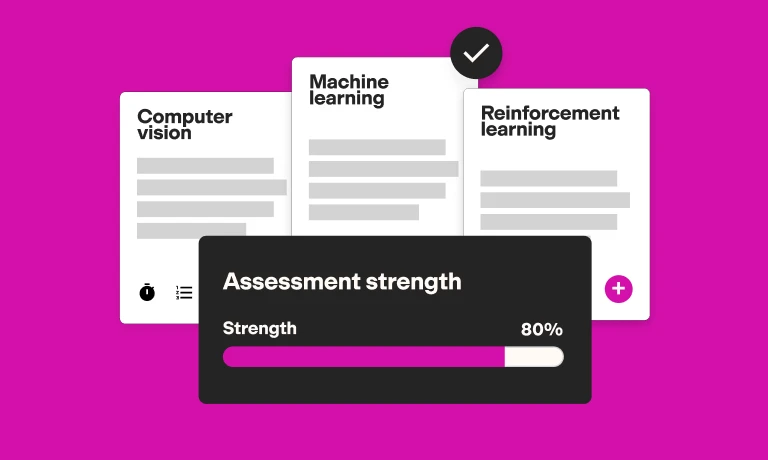How to keep deskless workers engaged and reduce turnover
Deskless workers are quitting in droves. More than half of such employees leave their roles less than 12 months after joining, leaving HR managers scrambling to refill positions.[1]
Staff without the luxury of going remote are driving a turnover crisis, leading to a “revolving door culture” and talent shortages for companies nationwide.
Whether frontline or back-office, these members of your team might feel:
Unappreciated by their supervisors
Out of the loop with their team
Restricted in their roles
Lacking tools and technology
Reasons for deskless worker turnover vary across businesses. However, there are steps to take to keep your in-house team happy, motivated, and confident, such as investing in employee upskilling through regular skills testing.
Below, we look at why the deskless turnover crisis is such a big issue and how to combat its root causes.
Table of contents
What is a deskless worker?
Deskless workers are employees with no fixed office or working area. Staff without desks have limited contact with company management and often zero access to email or the firm’s intranet.
You can find non-desk employees in almost every niche in every industry. If they work without a desk or access to an office, they fit this definition.
Around 37% of US workers are deskless, supplying frontline support, emergency care, customer contact, and manual labor.
What do deskless workers do?
Deskless employees work in:
Retail stores
Assembly lines
Hospital triages
Restaurants
Logistics
Agriculture
Manufacturing
Construction
We all rely on desk-free workers to build, assemble, and sell our products. Deskless teams work with the public, with heavy machinery, and frequently act as the face of a business.
However, despite their importance, no-desk talent is more at risk of job turnover than office staff.
High turnover: The issue plaguing deskless workforces
An estimated 37% of the deskless workforce is considering leaving their roles in the next six months. They’re highly prone to the “revolving door effect.”
As soon as one deskless hire joins a business, another one leaves.
The data quoted shows almost half of Generation Z deskless workers are on the cusp of quitting. Comparatively, it’s 24% of Baby Boomers and 35% of Millennials.
In contrast, further studies show around 26% of all Generation Z employees intend to leave their jobs in the next year. It’s clear that Gen Z’s desk-free workers feel less enthusiastic about staying on.
HR managers now have to prioritize strategies for hiring Gen Z recruits and effectively retaining them. Such high turnovers give recruiting managers the exhausting, cyclical challenge of keeping workforces running.
This crisis isn’t unique to any industry, but some deskfree workforces suffer more than others.
Data samples from December 2022 show the difference between hiring and firing rates across three largely mobile workforces (construction, leisure and hospitality, and transportation) over the course of a month.
Here’s a quick breakdown:
Industry | No. of hires (Nov-Dec 22) | No. of separations (Nov-Dec 22) |
Construction | 357,000+ | 324,000+ |
Leisure and Hospitality | 1.1 million+ | 1.04 million+ |
Transportation | 336,000+ | 319,000+ |
This data shows more hires than fires, but the gap is still uncomfortably close. Comparing hire to fire, US construction firms kept under 10% of their workforce between November and December 2022.
Let’s look at why the deskless exodus has reached such a crisis point.
The best insights on HR and recruitment, delivered to your inbox.
Biweekly updates. No spam. Unsubscribe any time.
Why are so many deskless workers leaving?
Although no-desk workers’ personal needs vary, they’re leaving jobs because they feel underappreciated, restricted, and/or have limited career prospects.
However, research shows it is more than these three triggers that give rise to the exodus nationwide.
Livelihood, stability, community, and culture are four core needs of frontline employees some managers don’t meet, potentially fuelling people to leave their firms.[2]
Here’s how these core needs look in a simple hierarchy:
Now let’s look at the key issues fueling the turnover and where you fit in.
Turnover triggers in brief
Reason for leaving | Explanation |
Lack of communication and guidance | There’s not enough clarity and support to help people do their jobs |
Inconsistency in guidance | Roles, shifts and feedback are constantly changing, causing frustration |
Poor technological support | The tools people need to do their jobs are inadequate or simply not available |
Zero career prospects | Employees have no progression routes within the company |
Few training and upskilling options | The firm does little to train up and make smarter use of its staff’s talents |
Lack of closeness with company culture | There’s little effort to make desk-free workers feel involved with news or events |
Zero flexibility | Management is “stiff” on requests for flexible work schedules or deadlines for deskfree staff |
Lack of communication and guidance
Clarity from managers is even more important for deskless teams because they often work independently and autonomously, whether on the shop floor or the assembly line. Regular communication with middle management is rare in these situations, leading to expectations of self-sufficiency.
Regardless of how motivated and self-sufficient a deskless worker is, little to no guidance leaves some hires feeling lost or frequently thinking on their feet. It’s a stressful, frustrating mindset.
Very little (or low-detail) manager feedback leads to anxiety and low-quality work. Disciplining employees on the back of this (when they’ve asked for help) only adds to the frustration.
Perhaps surprisingly, up to 75% of deskless workers don’t even trust their supervisors to communicate openly.
Want to learn more about how the role of middle management is changing and how to get ahead of it? Read our blog post about the future of middle management.
Inconsistency in guidance
Mobile workforces demand consistency in guidance and feedback. If they are working solo, they need to know instructions are relevant, up-to-date, and don’t conflict with any previous advice.
Inconsistency causes resentment, whether through unpredictable shift patterns or irrelevant feedback points.
Sudden changes to guidance prove similarly frustrating. Non-desk staff feel powerless in this scenario, especially when they follow company guidance to the letter.
Following inconsistent guidelines and feedback leads to communication breakdowns between staffers and managers – and between departments.
Products and services face delays and inconsistent quality in output, and, inevitably, the workers leave feeling burned out and unappreciated.
Poor technological support
Although they’re not sitting in offices, many deskless workers frequently use portable hardware, apps, and in-house records to complete tasks.
For example, nurses need access to patient details, retail staff need Point of Sale (POS) receipts, and logistics drivers need GPS tracking – without these tools, their work and morale suffer.
Up to 75% of deskless workers use technology as a necessity. Despite this, 60% of the same survey pool say they’re dissatisfied with the standards they receive.
Managers failing to provide relevant technology or tools to their desk-free crews cause work quality to suffer and employees to feel powerless, and resentful.
Zero career prospects in-house
Over 70% of desk-free staff apply to career advancement programs. The vast majority of people you hire want to learn and develop in-house.
However, 41% of people say they need support to advance. Consider how many Gen Z workers are leaving these roles – the younger the employee, the less likely they’ll stay in a “means to an end” position.
Failure to support non-desk careers leads to:
1. A stagnant workforce
2. Employees with nowhere to go
3. Consistently high turnover
Few training and upskilling options
The more roles and responsibilities a deskless worker has, the more training they need. In many cases, you’d hire staff already skilled for such positions (or test them on their interpersonal skills if it’s a customer-facing role).
If a desk-free worker finds their role needs specialist skills or knowledge and doesn’t receive training, anxiety sets in. A lack of deskless workforce training support breeds insecurity and unpreparedness.
Staffers then leave businesses because they lack confidence and burn out. This gets worse if managers fail to listen to concerns.
Lack of closeness with company culture
Deskless workers often feel isolated from the rest of their organization due to the nature of their roles. Construction specialists, logistics drivers, and traveling engineers often work solo for several days a week.
This leaves many of these employees missing out on the interactions they’d typically expect in an office or working closely with HQ. It’s not a phenomenon affecting all field or desk-free crew, but it’s a common cause of turnover.
There are a number of ways to remedy this cultural isolation. Prioritize accessibility for deskless personnel (e.g. corporate news, developments, and cultural moments) all the same.
Zero flexibility
The pandemic’s home-working boom resulted in 58% of US workers working remotely. However, not all non-desk workers have this opportunity.
Employees without desks demand flexibility not on a work-from-home basis but in their shift patterns, available tasks, tools, and career pathways.
“Working stiffness” restricts downtime and affects personal lives negatively, making it difficult to keep a healthy work/life balance. That leads to resentment, frustration, and, ultimately, resignations.
However, there is a need to be reasonable. Workers must remember what managers expect from them, and as management, your boundaries are golden.
What can HR professionals do about it? 8 tips for reducing turnover in your deskless workforce
Thankfully, there are a few ways for HR and recruitment to combat low retention rates in deskless workforces and fight against The Great Resignation.
Here are eight tips to help you get started.
A quick summary
Tip | How? |
Prioritize flexibility | Create a realistic, flexible schedule to retain staff for core hours, but remain open to change (within reason) |
Offer more benefits | Offer traditional and enhanced in-house upgrades, supporting work-life balance alongside financial rewards |
Upskill and develop your employees | Create personal development plans to help people progress in-house |
Keep in touch | Regularly coach your workforce and provide opportunities for cross-department contact |
Focus on skills for mobility | Test existing employee skills and create a diverse internal talent pool |
Promote health and wellbeing | Offer healthcare benefits and check in regularly with your employees |
Rethink manager training | Skill-test and train management to offer support to deskless workers |
Overhaul your onboarding | Create an onboarding system that both “welcomes” and “inducts” |
1. Prioritize flexibility
A flexible working schedule improves morale and assists deskless staff with personal responsibilities (e.g. working parents).
To prepare, test for skills to see if your desk-free employees are ready to work flexibly. For example, test their motivation to see their drive to work autonomously.
Post-testing, consider a core-and-flexible hours model. When do you need your hires the most – and is a flexible schedule outside those hours possible?
Being realistic is key when boosting flexibility. Some deskless roles (such as restaurant workers) aren’t able to work from home. However, flexible hours benefits manual workers, customer personnel who work off-base, and construction crews working to deadlines.
Once you’re ready to go “fully flexible,” set boundaries. Design a process showing workers what supervisors expect and how you’re flexible around such demands.
Then, back this up with an SOP (Standard Operating Procedure) or documentation laying everything out in detail. Give hires a chance to reach out if they need help and opportunities to manage their own time (with sign-off from HR).
2. Offer more benefits
Benefits beyond basic wage increases help to keep your non-desk crew from abandoning ship. Though raises and cash incentives are welcome, low pay isn’t the main reason why deskless people quit.
Alongside cash bonuses, provide:
Insurance benefits
Healthcare coverage
Enhanced sick pay
Discounts on leisure and fitness services
Extra vacation time
These benefits are “traditional perks.” Many workforces already provide such incentives in-house, and there’s a chance your business is much the same.
That’s why, to engage desk-free workers further, you should provide more benefits in addition to a broader diversity of incentives where possible.
Consider tailoring non-traditional employee benefits to appeal to their work-life balance and to keep your firm competitive.
For example, try offering:
Family planning support
Financial advice services
Therapy sessions
Mentorship programs
Social events and in-house events
Enhancing the benefits you offer deskless hires isn’t about cajoling. It shows you understand their efforts and truly appreciate them.
The knock-on effect of supporting your employee’s lifestyles is an improvement in both their mental health and their output quality.
3. Develop your employees
The majority of no-desk employees want to learn and develop. As an option, professional development plans (PDPs) help people better realize their career goals and take control of checkpoints along the way.
PDPs help deskfree staffers learn new skills boosting confidence and feelings of accomplishment – and move them across other areas of the business where desired.
For companies, PDPs help to train and keep the best people, and attract exceptional talent interested in personal development.
Meaningful PDPs should build around the specific needs of each employee. Catch-all PDPs appear irrelevant and lazy, which pushes people away.
Beyond PDPs, it’s easy enough to inspire development in team members just by keeping expectations clear. Explicit roadmaps show employees opportunities to develop, when it’ll be possible, and how.
Removing ambiguity makes opportunities appear all the more feasible and attractive to workers who linger on whether or not to leave.
Managers back expectations up further with genuine case studies from promoted employees, who share their stories with new hires and potential leavers.
Upskilling, too, helps to boost individual talent and add responsibilities (and value to hires in the firm’s eyes).
In addition, Gallup finds that 65% of employees place importance on upskilling opportunities when evaluating a potential job, meaning everybody wins.
4. Keep in touch
Those deskless staff who feel isolated from company culture benefit massively from managers simply “touching base” regularly.
Improving corporate closeness means more than just bringing management and desk-free workers together. Develop a plan or system for your deskless employees to keep in touch with other team members, too, to build camaraderie, respect, and improve collaboration.
Retail staffers communicate with warehouse teams effectively through POS apps and mobile devices. Regular meetings between restaurant owners and front-of-house staff help the latter feel valued and give clarity on what they need to do.
Simply showing you listen to and value feedback ensures desk-free workers feel closer to your culture.
Meanwhile, creating a 1:1 coaching system enables all staff to regularly discuss their work and develop closely with a manager with zero peer pressure.
This 1:1 coaching is conducive to ensuring employees feel valued and helping managers identify key development areas and skills in their non-desk teams.
Many deskless operatives show an aptitude for leadership – so test their people management skills and tap into this potential with tailored coaching.
5. Focus on skills for mobility
Skills-based hiring helps HR and recruitment find broader diversity in niche talent and experience.
No-desk workforces are already diverse, often relying on people with multiple skills, interests, roles, and responsibilities. Hiring based on skills and testing them during development builds stronger, multi-talented teams.
This additionally leads to higher-quality output, a confident, capable team, and a cohesive sense of culture.
Skills testing and monitoring:
Creates roles
Maps out your talent pool and where said roles fit
Saves money on hiring external workers
You’re effectively “enhancing” your existing staff.
Internal role mobility lets you create exciting opportunities for mobile workforces inside your company. Simply head straight to your internal talent pool before hiring externally for upcoming projects and needs.
Deskless workers feel accomplished and valued when developing skills. TestGorilla assessments, for example, let you tap into innate skills and build upon training that’s already underway.
Skills-based hiring helps you decide if an internal desk-free hire is a good transfer into a new area or specialism with minimal training. You’re reducing turnover by “repurposing” staff into a new position. This helps non-desk workers feel enthused and engaged.
6. Promote health and wellbeing
Up to 70% of deskless frontline workers felt at risk of burning out during the year 2020/21.
Frontline employees believe increasing workloads (56%) and long working hours (52%) are to blame for this effect.
Start counteracting this effect and provide desk-free employees with health benefits on site. Consider:
1:1 counseling
Meditative spaces
Gym and fitness facilities
In-house spa (or partner with a local provider)
Support the health of your deskless workers outside of working hours, too. Focus on discounting priority healthcare, insurance, dental planning, and family care.
Schedule time to coach and connect with your team to:
Check how they’re feeling
Inquire if you’re able to assist them further
Provide an “open door” policy for workers to contact you privately
Healthy, happy deskless specialists want to stay with you, and productivity improves in a more empathetic working environment.
7. Rethink manager training
Many desk-free staffers feel mismanagement causes frustration, and that leads to higher turnover rates. Plenty of these problems occur through poor manager training at the outset.
Better managers foster employee engagement and build more productive, happier deskfree teams.
To take advantage, set clear goals for managers and deskless workers. Focus on boosting their delegation, managerial confidence, and adaptability skills.
Test for these skills before hiring and before promoting within the company. Using internal mobility principles, transfer and promote people with aptitude and passion for management.
Create clear SOPs for managers to keep deskless employees in the loop, too.
8. Overhaul your onboarding
It’s easier and more effective to prevent desk-free turnover from rising than it is to keep up with a revolving door. Always ensure your onboarding process warmly welcomes new hires into your culture.
To start, be precise. Show new deskless hires what to expect from their role and your business in detail, but use accessible and enthusiastic language. Genuine enthusiasm shows prospects you’re supportive, welcoming, and that you care about what success looks like.
From here, help hires become part of your culture early. Share resources and contact points should they need support or guidance.
Share internal testimonials and case studies to show how you care for your workforce. Enable your hires to explore facilities, and schedule 1:1 coaching and development from day one – following up regularly.
Remember to keep testing for skills during hiring and beyond onboarding. Assure your hires you care about developing their careers, not just “filling a space.”
Show your deskless workers some love
Deskless workers don’t demand much from you. They need to feel valued and part of a larger team. Most also want access to career development – and they all desire open communication and guidance.
The happier and more supported your deskless workers are, the less likely they are to leave.
By incorporating TestGorilla assessments into your onboarding, development, and coaching, you build an engaged, fulfilled, and happier workforce.
For example, why not test your prospects on how they might fit into your workplace culture?
Sources
1. “Blue Collar Canada: Whitepaper February 2022”. (February, 2022). Express Employment Professionals. Retrieved March 3, 2023. https://www.expresspros.com/uploadedFiles/Corporate/Corporate\_Canada/Content/Documents/Blue-Collar-Whitepaper-2022-Canada.pdf
2. “The Deskless Report”. (2022). Nudge. Retrieved March 3, 2023. https://deskless.nudge.co/report/
You've scrolled this far
Why not try TestGorilla for free, and see what happens when you put skills first.


